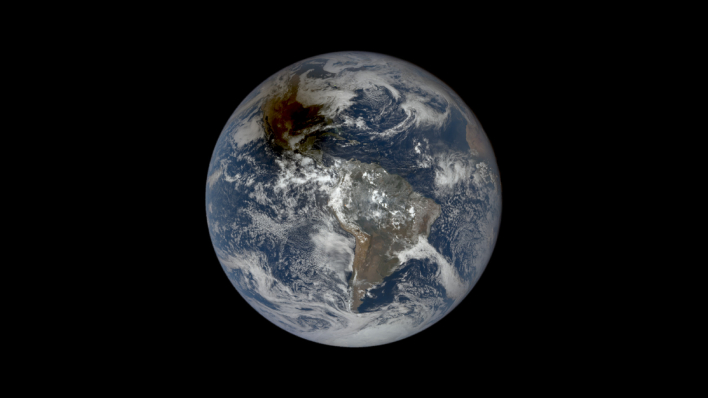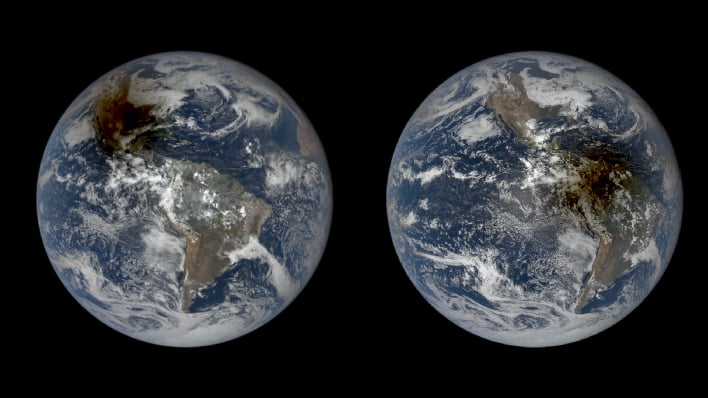NASA Shares Stunning Images Of Annular Eclipse As Seen From 1 Million Miles In Space

Onlookers gazed upward this weekend as the Moon moved between the Sun and Earth and created what is known as a "ring of fire." The spectacle was visible from the ground for those along a narrow path stretching from Oregon to Texas in the US and a partial eclipse for those across the contiguous US, Puerto Rico, and parts of Alaska and Hawaii. NASA also provided live coverage of the event on its website for anyone outside the viewing area, and has now shared a unique view from a million miles away in deep space.
The two images above were part of thirteen images shared by the space agency that followed the path of the annular eclipse as it moved across the Earth. All the images were created by the Earth Polychromatic Imaging Camera (EPIC) onboard the DSCOVR spacecraft.
EPIC provides 10 narrow-band spectral images of the entire sunlit face of Earth utilizing a 2048 x 2048 pixel Charge Coupled Device (CCD) detector coupled to a 30-cm aperture Cassegrain telescope. DSCOVR is positioned at the Earth-Sun Lagrange-1 point which gives the spacecraft a unique angular perspective that can be used to measure ozone, aerosols, cloud reflectivity, cloud height, vegetation properties, and UV radiation estimates at the Earth's surface.
Those fortunate enough to view the annular eclipse from Earth in its totality were privy to the "ring of fire." This incredible event happens when the Moon is at or near its farthest point from Earth. Because the Moon is farther away, it appears smaller and does not block out the entire Sun when it passes in front of it. This creates the fiery ring effect.
The next total solar eclipse will occur on April 8, 2024. After that, the next viewable total solar eclipse from the contiguous US will not occur until August 23, 2044.


